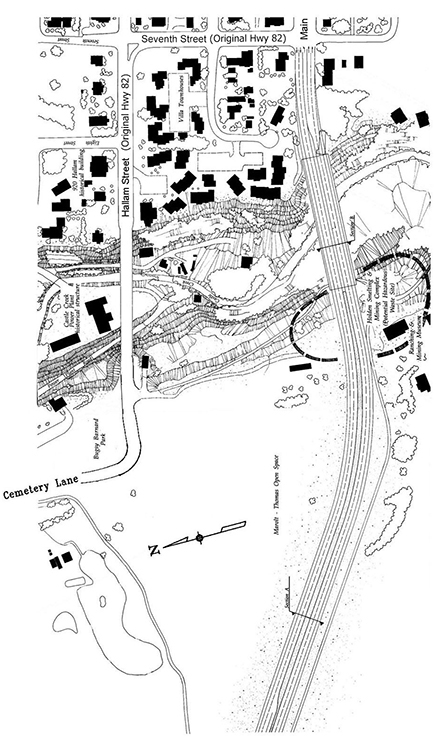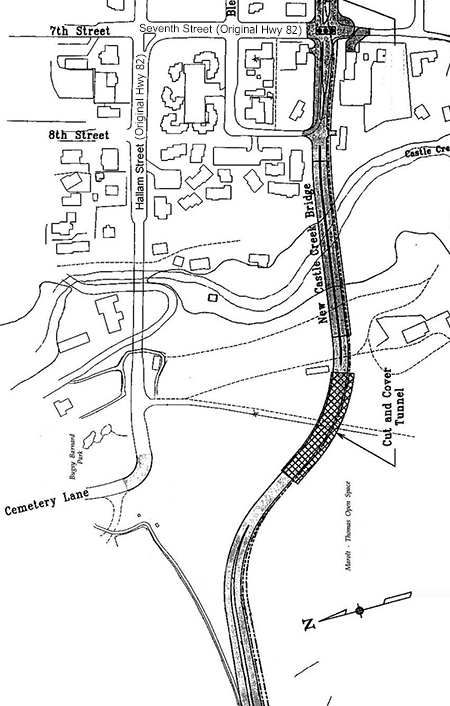There are three primary elements necessary to build a new Entrance to Aspen.
Money - Obtaining federal and state money to pay for new construction requires an Environmental Impact Statement (EIS) process to evaluate the merits of particular designs - and that has already been completed.
Voter Approval - There must be City of Aspen voter approval for a change in use of open space land which allows construction of one of the solutions studied in the EIS - and that has already been provided.
Elected Officials - An Aspen city council must initiate construction of a new entrance, one with the capacity to alleviate congestion and satisfy the requirements of the two elements above. This is the missing piece.
The Direct Connection illustration above (left) was provided by the State of Colorado to the voters of Aspen just prior to an election mandated by the Aspen City Charter. The charter requires voter approval of any change in use of land acquired for open space - such as the Marolt property at the center of both illustrations. Aspen voters approved a change to their open space to allow construction of this new entrance to town by a margin of 1475 to 1042, subject to certain conditions.
NOTE: This voter approval covers the entire section of Highway 82 between Buttermilk Ski Area and the intersection of Seventh and Main Streets in Aspen. The Marolt property is featured because it is considered the most controversial portion of the Entrance to Aspen, and is the only area where the highway would make a significant deviation from the current alignment.
In order to satisfy the conditions of the Direct Connection voter approval:
(1) The Colorado Department of Transportation (CDOT) must compensate the City of Aspen for the open space used for highway construction. This has already been accomplished.
(2) The state must vacate the land between the existing Cemetery Lane intersection and the point where the new alignment leaves the existing highway, and convert the land to open space. There is no controversy on this requirement, and it is easily satisfied.
(3) The Cemetery Lane traffic light will be removed, and a new traffic light will be installed at the corner of 7th & Main Streets. Again, no controversy.
(4) There must be four lanes of highway.
In order to satisfy the separate and independent requirements of the Environmental Impact Statement for the entrance:
(1) The alignment must follow a route which substantially matches this illustration by crossing the Marolt property.
(2) The alignment may either be "at grade" or include a "cut and cover" tunnel. It is unlikely that the tunnel would be built unless, as determined by CDOT, it is required by federal law in order to mitigate the taking of open space.
(3) Two of the lanes must be transit priority lanes, i.e. rail, bus lane, or HOV. The current highway between Basalt and Buttermilk is an example of a HOV configuration which satisfies this requirement.
The points of agreement between the Direct Connection voter approval and the EIS form the basis for the solution which is already in hand. However, substitution of light rail tracks in place of two highway lanes violates the four lane highway requirement in the Direct Connection. Neither rail nor bus lanes provide the additional general traffic capacity needed fix the problem. So, the HOV option is the only solution which is compatible with both the EIS and voter approval - and which provides the additional lane capacity needed to relieve congestion.



